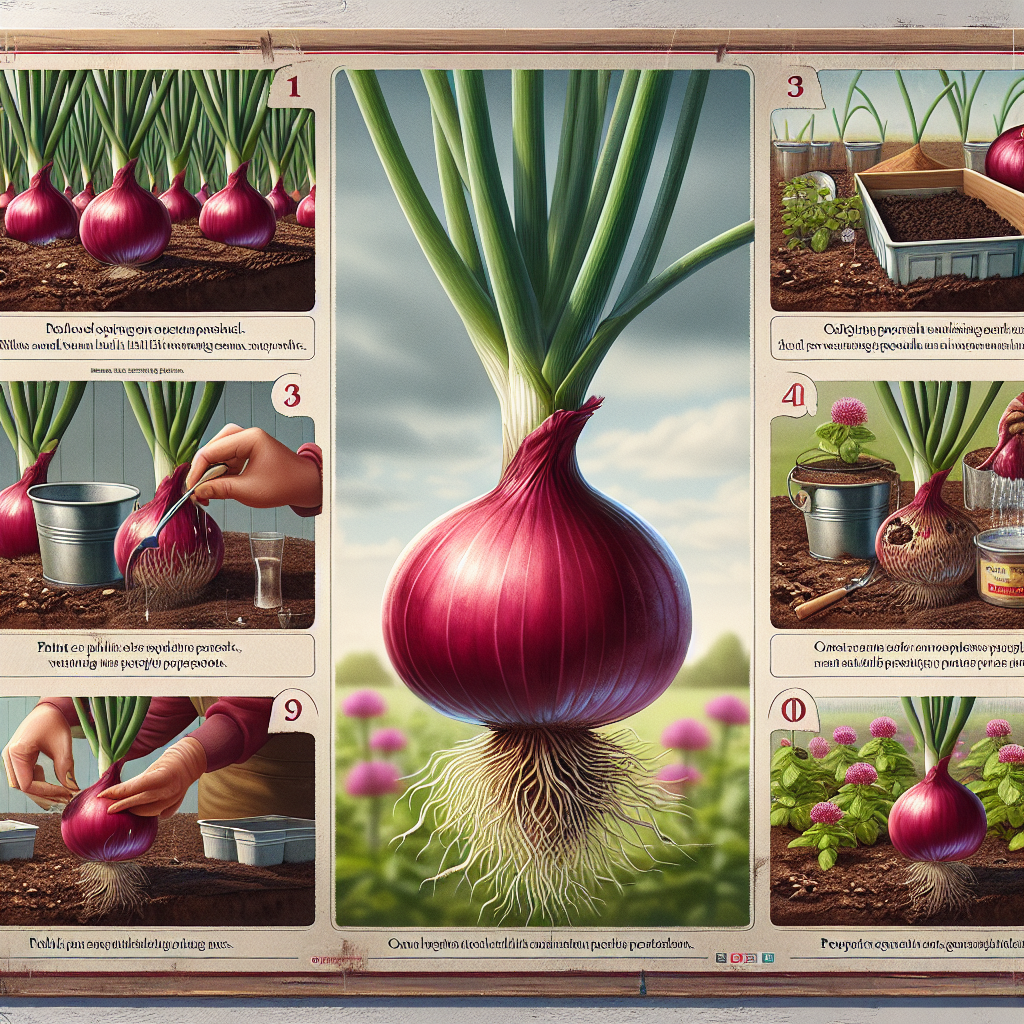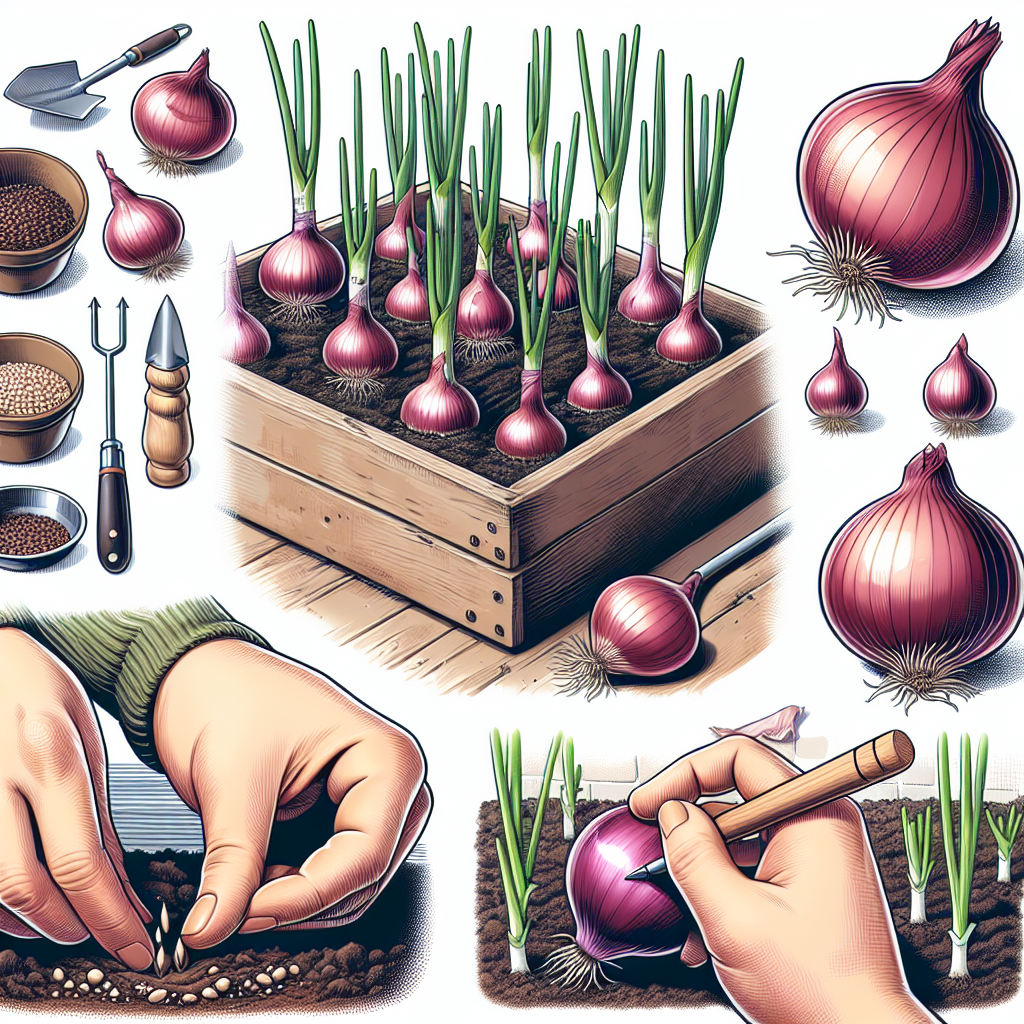Growing Red Onions at Home: A Guide to Successful Cultivation
Red onions, with their vibrant color and distinct flavor, are a versatile ingredient that can enhance the taste of various dishes. Growing red onions at home can be a rewarding experience, as it allows you to have a fresh supply of this flavorful vegetable right at your doorstep. In this guide, we will walk you through the process of successfully cultivating red onions in your own backyard.
Choosing the Right Variety:
Before starting the cultivation process, it is important to choose the right variety of red onion for your climate and growing conditions. Some popular red onion cultivars include Red Burgundy, Red Bull, and Italian Red Tropea. Ensure that you select a variety that is suitable for your region.
Preparing the Soil:
Red onions thrive in well-draining soil with a pH level ranging between 6 and 7.5. Before planting, prepare the soil by removing any weeds or rocks and adding organic matter such as compost or well-rotted manure to improve its fertility and structure. It is also recommended to perform a soil test to determine if there are any nutrient deficiencies that need to be addressed.
Planting:
Red onions can be grown from seeds or sets (small bulbs). If you choose to grow them from seeds, start sowing them indoors about 8-10 weeks before the last frost date in your area. Transplant the seedlings into your garden when they are about 4-6 inches tall.
If you prefer using sets for planting, purchase healthy ones from a reputable supplier. Plant them directly into the ground around early spring or fall when the temperature is cooler but not freezing. Make sure to space each bulb around 4-6 inches apart and plant them around 1 inch deep.
Watering and Maintenance:
Red onions require consistent moisture throughout their growing season but should not be overwatered as this can lead to rotting bulbs. Aim to keep the soil evenly moist, especially during dry spells. Mulching around the onion plants can help retain soil moisture and suppress weed growth.

Regular weeding is important to ensure that the onions are not competing with other plants for nutrients and moisture. Gently remove any weeds without disturbing the onion bulbs.
Fertilization:
Providing adequate nutrition to red onions is crucial for their healthy growth. Before planting, incorporate a slow-release fertilizer or compost into the soil to provide essential nutrients. As onions are heavy feeders, it is recommended to side-dress them with nitrogen-rich fertilizer once they reach a height of around 6 inches.
Harvesting:
Red onions are typically ready for harvesting when the green tops start to turn yellow and fall over. This usually occurs around 100-120 days after planting, depending on the variety and growing conditions. Lift the bulbs carefully using a garden fork, allowing them to dry in a well-ventilated area for a couple of weeks until their outer skins become papery.
Storing:
Once fully dried, trim off the dried tops and roots from the bulbs without removing too many layers of skin. Store them in a cool, dry place with good air circulation such as a mesh bag or wooden crate. Red onions can last for several months when stored properly.
Pests and Diseases:
While red onions are generally resistant to pests and diseases, they can still be susceptible to certain problems such as onion maggots, thrips, and downy mildew. Monitor your plants regularly and take necessary measures if you notice any signs of infestation or disease, such as applying organic insecticides or fungicides.
Conclusion:
Growing red onions at home can be an enjoyable and rewarding experience that allows you to have a fresh supply of this flavorful vegetable all year round. By choosing the right variety, preparing the soil properly, providing adequate water and nutrition, practicing proper maintenance techniques, and taking necessary pest and disease control measures, you can ensure a successful cultivation of red onions in your own backyard. Enjoy the satisfaction of harvesting and using your home-grown red onions to add a burst of flavor to your favorite dishes!














